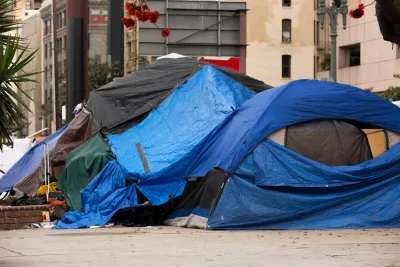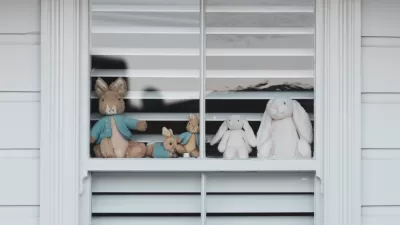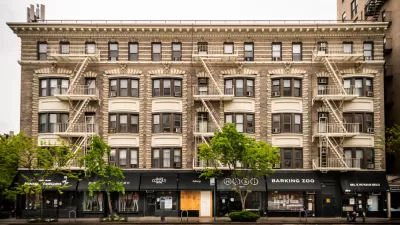Alisa Orduña shares her insight on Santa Monica's COVID-19 response and the pandemic's disruption both on the lives of L.A.'s unhoused and the approach cities take towards crises of public health, safety, and wellbeing, going forward.

While COVID-19 magnifies many glaring crises facing metropolitan Los Angeles, California, and United States, the potentially catastrophic impact of the virus on the unhoused has catalyzed urgent, unprecedented action to provide adequate shelter and sanitation services to the region’s most vulnerable residents.
The Planning Report interviewed Alisa Orduña, senior advisor on homelessness for the city of Santa Monica, for insight on the city’s response to the COVID-19 pandemic and the compounding impacts of the virus on the unhoused in Los Angeles. Orduña weighs in on how the crisis is disrupting lives and vital services and transforming how governments in California plan for, and respond to, public health and safety emergencies, now and henceforth.
"For the first two or three weeks that we've been in the pandemic, and as the various declarations come down requiring the housed community to stay safer at home, we've been making sure that our unhoused communities still have access to basic services."
For the full interview, read in The Planning Report.
FULL STORY: Santa Monica's Alisa Orduña: Pandemic Compounds Urban Homelessness Challenges

Maui's Vacation Rental Debate Turns Ugly
Verbal attacks, misinformation campaigns and fistfights plague a high-stakes debate to convert thousands of vacation rentals into long-term housing.

Planetizen Federal Action Tracker
A weekly monitor of how Trump’s orders and actions are impacting planners and planning in America.

In Urban Planning, AI Prompting Could be the New Design Thinking
Creativity has long been key to great urban design. What if we see AI as our new creative partner?

King County Supportive Housing Program Offers Hope for Unhoused Residents
The county is taking a ‘Housing First’ approach that prioritizes getting people into housing, then offering wraparound supportive services.

Researchers Use AI to Get Clearer Picture of US Housing
Analysts are using artificial intelligence to supercharge their research by allowing them to comb through data faster. Though these AI tools can be error prone, they save time and housing researchers are optimistic about the future.

Making Shared Micromobility More Inclusive
Cities and shared mobility system operators can do more to include people with disabilities in planning and operations, per a new report.
Urban Design for Planners 1: Software Tools
This six-course series explores essential urban design concepts using open source software and equips planners with the tools they need to participate fully in the urban design process.
Planning for Universal Design
Learn the tools for implementing Universal Design in planning regulations.
planning NEXT
Appalachian Highlands Housing Partners
Mpact (founded as Rail~Volution)
City of Camden Redevelopment Agency
City of Astoria
City of Portland
City of Laramie





























